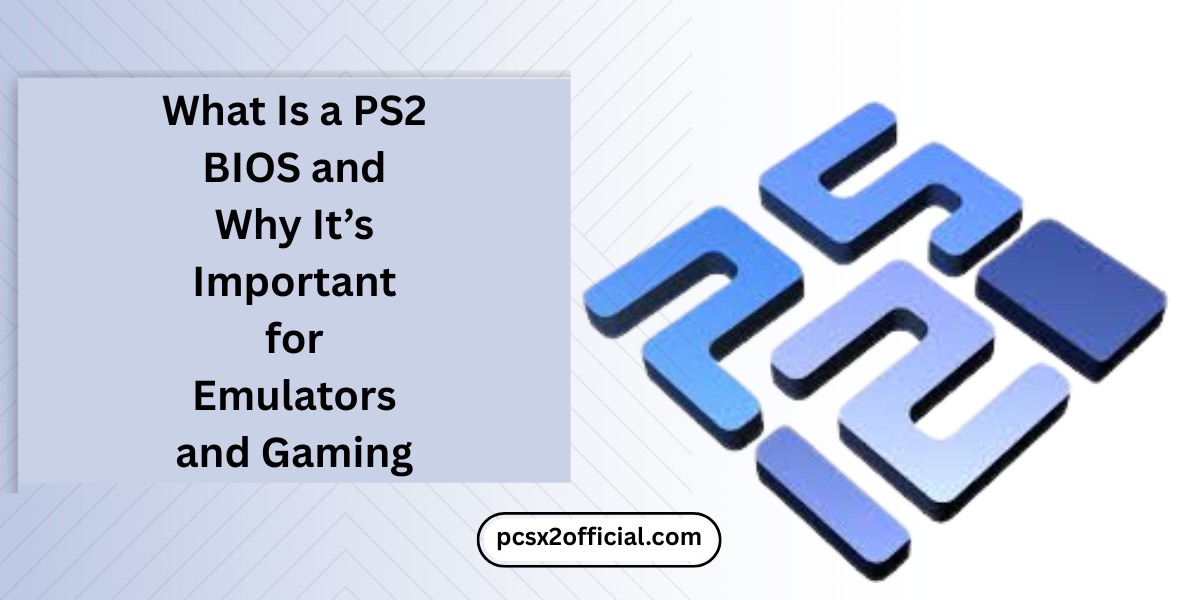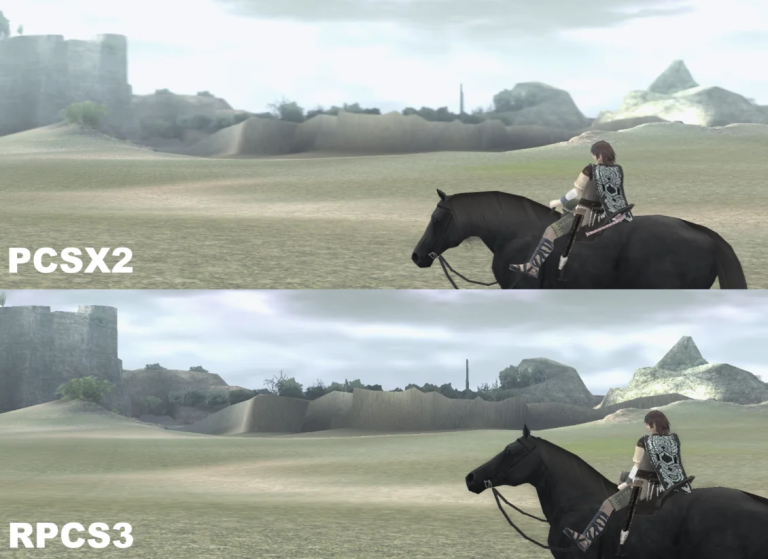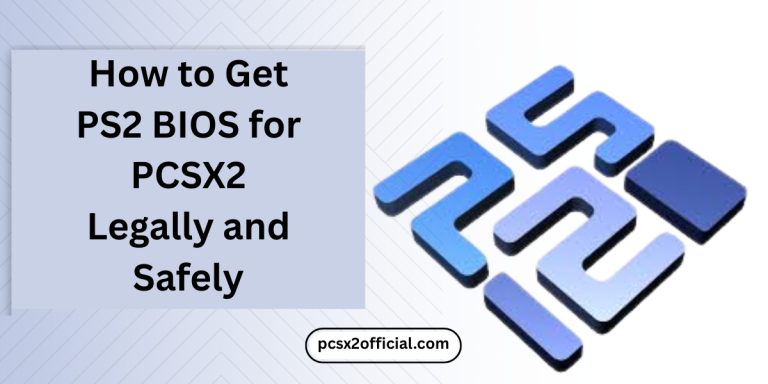What is PS2 BIOS and Why It’s Important for Emulators and Gaming

The PlayStation 2 (PS2) is one of the most beloved consoles in gaming history, but to relive its classics on modern hardware, gamers often turn to emulators like PCSX2. One of the most essential components in this process is the PS2 BIOS. Without it, emulators cannot function properly.
But what exactly is the PS2 BIOS, and why is it so important for emulation and gaming? Let’s break it down in detail.
What is PS2 BIOS?
The BIOS (Basic Input/Output System) is a small but crucial piece of software embedded in every PlayStation 2 console. It acts as a bridge between the PS2’s hardware and its operating system, initializing components and loading the system software.

In simple terms, the BIOS is the console’s boot-up brain. When you power on a PS2, the BIOS handles:
- Checking system hardware (controllers, memory cards, disc drive).
- Initializing the PlayStation operating system.
- Loading the game disc or software.
This makes the BIOS essential to replicating the PlayStation 2 environment on a PC or emulator.
Why the PS2 BIOS Is Essential for Emulation
The PlayStation 2 BIOS may seem like just a small system file, but in reality, it’s one of the most important components for emulating the PS2 on software like PCSX2. Without it, emulators cannot accurately replicate the functions of the original console. With it, games become stable, playable, and authentic, just like they were on real hardware.
For retro gamers and emulation enthusiasts, understanding why the PS2 BIOS is essential can make the difference between a smooth gaming session and constant crashes. Let’s break down the reasons in detail.
Runs Games Correctly and Reliably
The most critical reason emulators need a BIOS is to make games run properly. Without it, many titles won’t even load, and those that do may crash randomly, freeze on loading screens, or display broken graphics.
Here’s what the BIOS does to improve reliability:
- It prevents black screens during startup.
- Reduces random crashes and freezing mid-game.
- Handles game-specific functions that emulators alone can’t replicate.
For example, some RPGs require BIOS functions for saving data, while racing games may rely on BIOS timing instructions to keep frame rates steady. Without the BIOS, these games would be unstable or unplayable.
Activates Important System Features
The PS2 BIOS is not just about launching games, it also unlocks key system features that define the console experience.
- Save File Support
- The BIOS manages virtual memory cards inside emulators. Without it, you may not be able to save or load progress, which is especially frustrating for long adventure or RPG titles.
- Original Boot Animation
- For nostalgia lovers, the BIOS enables the PS2’s classic boot-up sequence. This detail may seem minor, but it adds authenticity to the emulation experience.
- Region Verification
- PS2 discs were region-locked. The BIOS checks if your game matches its region (NTSC-U, NTSC-J, PAL). Without this, some titles may refuse to load altogether.
These features are built into the PS2 BIOS and cannot be replicated by emulator code alone, which is why they’re indispensable.
Helps Maintain Game Stability
A working BIOS is also responsible for keeping gameplay smooth and consistent. It ensures:
- Stable frame rates: Games maintain consistent speed without random slowdowns.
- Balanced memory use: Prevents overloads that could cause freezing or corruption.
- Reduced risk of crashes: Keeps the emulator in sync with game processes.
Without the BIOS, players might experience constant lag spikes, slowdowns, or audio desync. The BIOS provides the emulator with the instructions it needs to keep gameplay steady and reliable, just like the original console.
Why the PS2 BIOS Is Important for Gaming
Beyond technical functions, the PS2 BIOS is critical for preserving compatibility, accuracy, and user experience in emulation.
1. Game Compatibility
Many PS2 titles are coded to rely on BIOS functions. Without them, these games either refuse to boot or behave incorrectly. The BIOS ensures that the entire PS2 library remains playable on modern devices.
2. Region Support
Not all BIOS files are the same. A Japanese BIOS (NTSC-J) may not work with a North American game (NTSC-U). Matching your BIOS with your game’s region ensures the highest compatibility and prevents loading issues.
3. Save System Functionality
Virtual memory cards are linked to BIOS functions. If the BIOS is missing or corrupted, you may lose the ability to save or load progress, which makes longer games nearly impossible to complete.
4. Graphic and Audio Accuracy
The BIOS ensures that games render their graphics and sound correctly. Missing or incorrect BIOS files can lead to visual glitches, distorted audio, or missing textures, breaking immersion.
5. Stable Controls
Input stability is another key BIOS function. It ensures that controller input is recognized smoothly, keeping fast-paced games like Devil May Cry 3 or Tekken 5 responsive and accurate.
PS2 BIOS and Game Preservation
Beyond functionality, the PS2 BIOS plays an important role in preservation. By allowing emulators to accurately replicate the original hardware environment, BIOS files help keep the massive PS2 library playable for future generations.
As PS2 consoles age and discs become fragile, BIOS-supported emulation ensures that both popular hits and rare forgotten titles remain accessible.
PS2 Legal and Ethical Considerations
One of the most important aspects of the PS2 BIOS is legality.
- Legal Way: You must dump the BIOS from a PlayStation 2 console you personally own. This creates a digital copy of your system software, which you can then use in PCSX2.
- Illegal Way: Downloading BIOS files from the internet is piracy, as the BIOS is copyrighted software.
For gamers who want a safe and authentic setup, creating your own BIOS dump is the proper way to go. This approach also ensures maximum compatibility with your specific games.
How BIOS Impacts Emulator Performance
The BIOS not only makes games playable but also affects performance and stability:
- Correct Region BIOS = Better Compatibility: For example, using a PAL BIOS with NTSC games may cause glitches. Matching regions ensures smoother gameplay.
- Stability of Saves and Memory Cards: Save data is tied to the BIOS. An authentic BIOS reduces corrupted saves and improves memory card emulation.
- Startup Sequence: BIOS files allow emulators to replicate the original PlayStation 2 startup animation, adding to the nostalgia and authenticity.
BIOS and Customization in PCSX2
Once the BIOS is configured in PCSX2, users can benefit from enhanced features that the original console never offered:
- Save States – Save and load your game at any point.
- Virtual Memory Cards – Manage unlimited digital memory cards instead of physical ones.
- Widescreen & HD Upscaling – Play classics in 1080p or 4K while keeping BIOS functionality intact.
These features make the BIOS not just essential for functionality but also the key to unlocking the full potential of emulation.
Step-by-Step Overview of Using a PS2 BIOS in PCSX2
- Dump Your BIOS from your PS2 console using Free McBoot or similar tools.
- Place the Files into the “bios” folder within the PCSX2 directory.
- Run PCSX2 Setup and select the correct BIOS from the configuration menu.
- Choose Your Region BIOS depending on the games you plan to play (NTSC-U, PAL, NTSC-J).
- Test and Play your first game to confirm everything is working smoothly.
Importance for Gamers and Developers
For gamers, the PS2 BIOS ensures a faithful emulation of their favorite titles. For developers and the emulation community, BIOS research provides insights into console architecture, helping improve compatibility and preserve games long-term.
Without BIOS support, emulators would struggle to recreate the precise conditions needed for PS2 games to run, leaving much of the library unplayable.
FAQs on PS2 BIOS
Final Thoughts
The PS2 BIOS is the backbone of PlayStation 2 emulation. It’s not just a technical requirement, it’s the bridge between past and present, ensuring that the massive PS2 library remains playable, authentic, and preserved for the future.
By legally dumping your own BIOS and configuring it within PCSX2, you gain access to a faithful PlayStation 2 experience enhanced by modern emulator features. Without the BIOS, PS2 emulation simply wouldn’t be possible.
For anyone passionate about retro gaming, understanding the importance of the PS2 BIOS is the first step to keeping this iconic console’s legacy alive.

